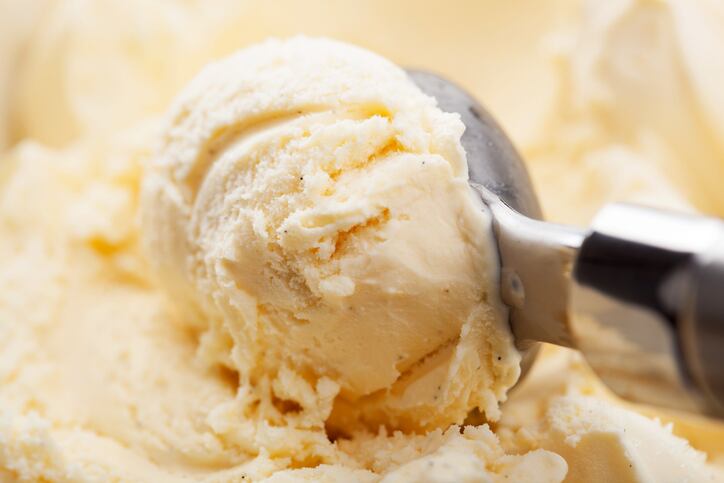The first vanilla flavoring class action case was filed in February 2019 in the Eastern District of New York. At the time, chocolate confectioners were facing a number of class action cases arising from their use of ‘white chocolate’ on labels. Thus, in context, the vanilla cases first appeared to be a variation on a theme.
However, the vanilla litigation soon took on an astonishing life of its own, with a new case filed just about every month, with the pace accelerating further in the fall. Nine vanilla flavor cases were filed in October 2019 alone.
‘The vanilla litigation soon took on an astonishing life of its own…’
The initial cases largely targeted vanilla-flavored dairy or alternative dairy products: ice creams, almond milks, soy milks, and creamers; and then expanded, including to granolas, flavored teas, yogurts, and cake mixes.
What case are plaintiffs making, and are you at risk of being sued?
The basic premise is that while the product label states the food is vanilla flavored, it actually contains non-vanilla flavors which imitate vanilla and are not derived from the vanilla bean. The complaints allege that the flavoring source is not disclosed to consumers. The complaints then assert that the labels violate state consumer protection statutes, warranty laws, and amount to misrepresentation.
Typically, the plaintiffs allege vanilla is a ‘high risk’ product for food fraud and refer to vanillin, which can be naturally sourced from the vanilla plant, or can be synthetically manufactured. According to the allegations, non-vanilla bean vanillin should be disclosed as an ‘artificial flavor’ pursuant to FDA regulations.
The plaintiffs assert that when a product is characterized as ‘vanilla’ without any qualifying terms such as ‘flavored,’ or ‘artificial,’ consumers presume that the entire flavor profile is derived from vanilla beans. The plaintiffs assert that any product labeling that does not exactly match FDA regulations is misleading.
What is the risk to product manufacturers targeted in vanilla lawsuits?
While technical violations of FDA’s vanilla labeling regulations may seem trivial, as with any false labeling class action, these cases represent potential risk to the product manufacturer. The measure of damages may be the difference between what the consumer thought she was getting and what she actually received.
This is referred to as the ‘price premium’ attained due to the alleged false labeling. In the class action context, the price premium is determined (or refuted) by consumer survey and statistics experts. Plaintiffs’ experts will allege that the price premium is applied to all class period unit sales of a product to obtain a damages figure.
Thus a $.25 price premium applied to 1 million in unit sales amounts to $250,000 in damages. For context, 1.4 billion gallons of ice cream were produced in the United States in 2017 making the sales volume very large. Even a small price premium may result in a large damages figure.
Summary of outcomes: A mixed bag
So what happened to all of those cases?
More than a third (27) were voluntarily dismissed, which may or may not have included the payment of money to the plaintiff and/or attorneys’ fees to the firms pursuing the claims. To date, one of the cases settled on a class-wide basis for $3 million.
A significant number of cases (16) have fully briefed motions to dismiss pending. Given the small number of decisions to date, the case law in this area is likely to evolve.
Only one case is close to class certification briefing, with the opening brief due this spring. This table summarizes the current procedural posture of the cases:
- Voluntary Dismissal: 27
- Settled: 2
- Settlement In Progress: 3
- Motion to Dismiss Granted: 6
- Motion to Dismiss Denied: 2
- Appeals: 1
- Motion to Dismiss Pending: 16
- Response To Complaint Pending: 12
Judicial decisions: What are the takeaways?
Even though a large number of vanilla cases have been filed, the courts have issued comparatively few decisions. Still, the following trends are clearly emerging:
‘Vanilla,’ standing alone, is probably not misleading: The courts appear to agree that the word 'vanilla' standing alone does not convey to the reasonable consumer that the source of the vanilla flavor is the vanilla bean. As explained by Cosgrove v. Blue Diamond Growers, Case No. 1:19-cv-08993 (S.D.N.Y.), “a reasonable consumer would associate the representation of ‘Vanilla’ – with no additional language modifiers – to refer to a flavor and not to vanilla beans or vanilla extract as an ingredient.” Courts have explained that consumers use a flavor name like vanilla to differentiate between food items while shopping.
But be careful when you provide details: The analysis changes if there are "representations about how that [vanilla] flavor is achieved.” (Id.) Courts have suggested that the word 'vanilla' plus language like 'vanilla extract,' could make a label misleading, for example. In Sharpe v. A&W Concentrate Co., Case No. 1:19-cv-00768 (E.D.N.Y.), the court found that the label claim 'Made with aged vanilla,' suggested to consumers that the vanilla content was naturally derived and had acquired a desirable quality upon the passage of time. Because the product allegedly contained the synthetic vanilla flavoring, ethyl vanilla, the court concluded that suit could proceed.
Pictures: Some courts have indicated that “pictures that suggest the vanilla flavor is derived exclusively from the vanilla bean” could render a label misleading. Clark v. Westbrae Natural, Inc., Case No. 3:20-cv-0322l (N.D. Cal.). Whether pictures of the vanilla flower or of vanilla beans will lead a court to conclude that the label may be misleading remains to be decided but at least one court ignored a flower vignette, concluding that the label would not mislead the reasonable consumer. Pichardo v. Only What You Need, Inc., Case No. 1:20-cv-00493 (S.D.N.Y.).
FDA permits ‘vanilla’ to be listed as a ‘natural flavor’: As noted in Zaback v. Kellogg Sales Company, Case No. 3:19-cv-02327 (S.D. Cal.), FDA regulations state that “[t]he label of a food to which flavor is added shall declare the flavor in the statement of ingredients in the following way: (1) ‘spice,’ ‘natural flavor,’ or ‘artificial flavor,’ or any combination thereof, as the case may be.” 21 C.F.R. § 101.22(a)(3). “Natural flavors include the natural essence or extractives obtained from plants listed in § 182.10 (including vanilla).”
In other words, for a given vanilla-flavored product, it can be the case that the product is flavored with vanilla derived from the vanilla bean, and also that the vanilla is identified as a 'natural flavor' on the statement of ingredients. To state a claim for false advertising, the burden is on the plaintiff to show that there is no vanilla in the product.
Where do we go from here?
With the large number of motions to dismiss pending, the landscape of the flavor litigation may change. Still, the decisions issued to date provide guidance which can help food and beverage companies in review of their product labels.
While the pace at which new vanilla cases has slowed in the last few months, the plaintiff’s firm largely behind this kind of litigation has expanded beyond boring vanilla into new flavor portfolios (strawberry, chocolate, fudge, and “real” milk). Companies should expect that flavor-related, alleged false labeling lawsuits will be with us for the foreseeable future.

Robert Guite is a partner in the Business Trial Practice Group and Managing Partner of the San Francisco office at law firm Sheppard, Mullin, Richter & Hampton LLP, focusing his litigation practice on class actions, involving ERISA, insurance, false advertising, commercial, construction and products liability matters. Abby Meyer is an associate in the Business Trial Practice Group and the lead associate for the firm’s Food & Beverage team. She is also a member of the firm’s Class Action Defense, Cannabis, and Healthcare teams.

